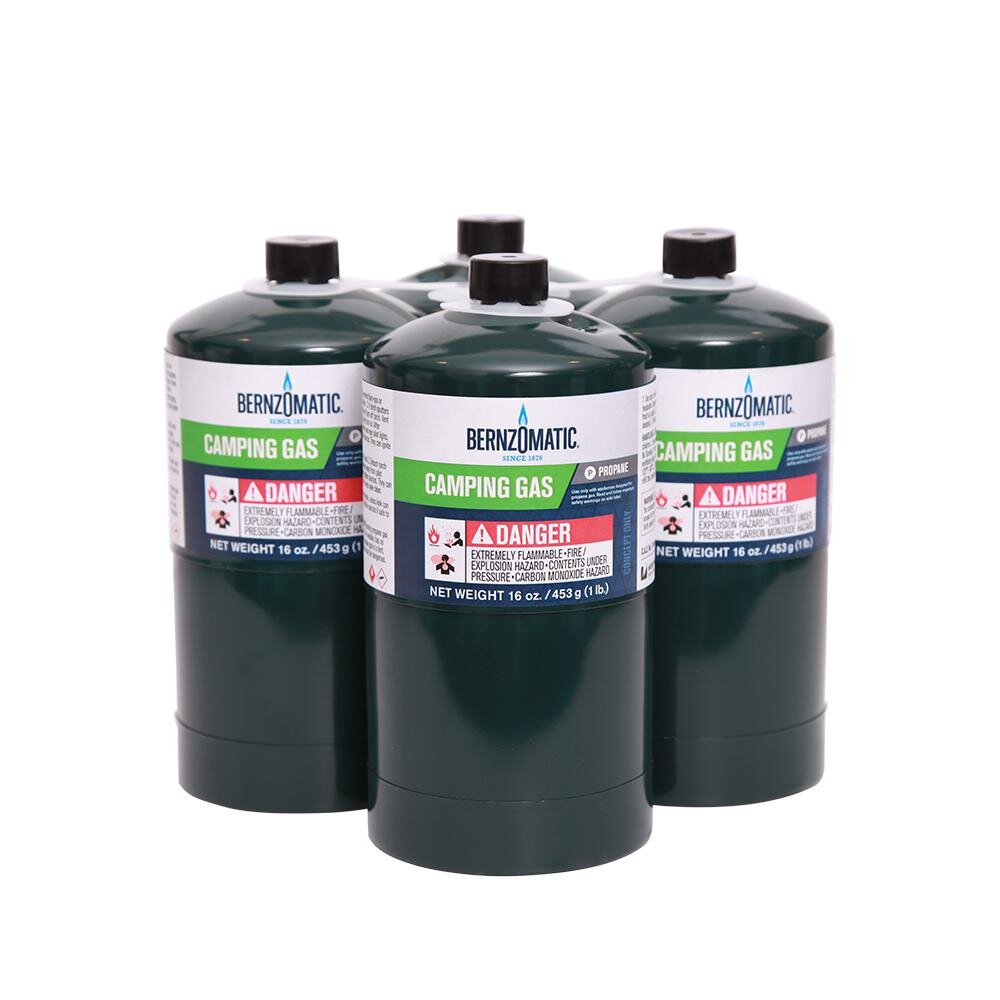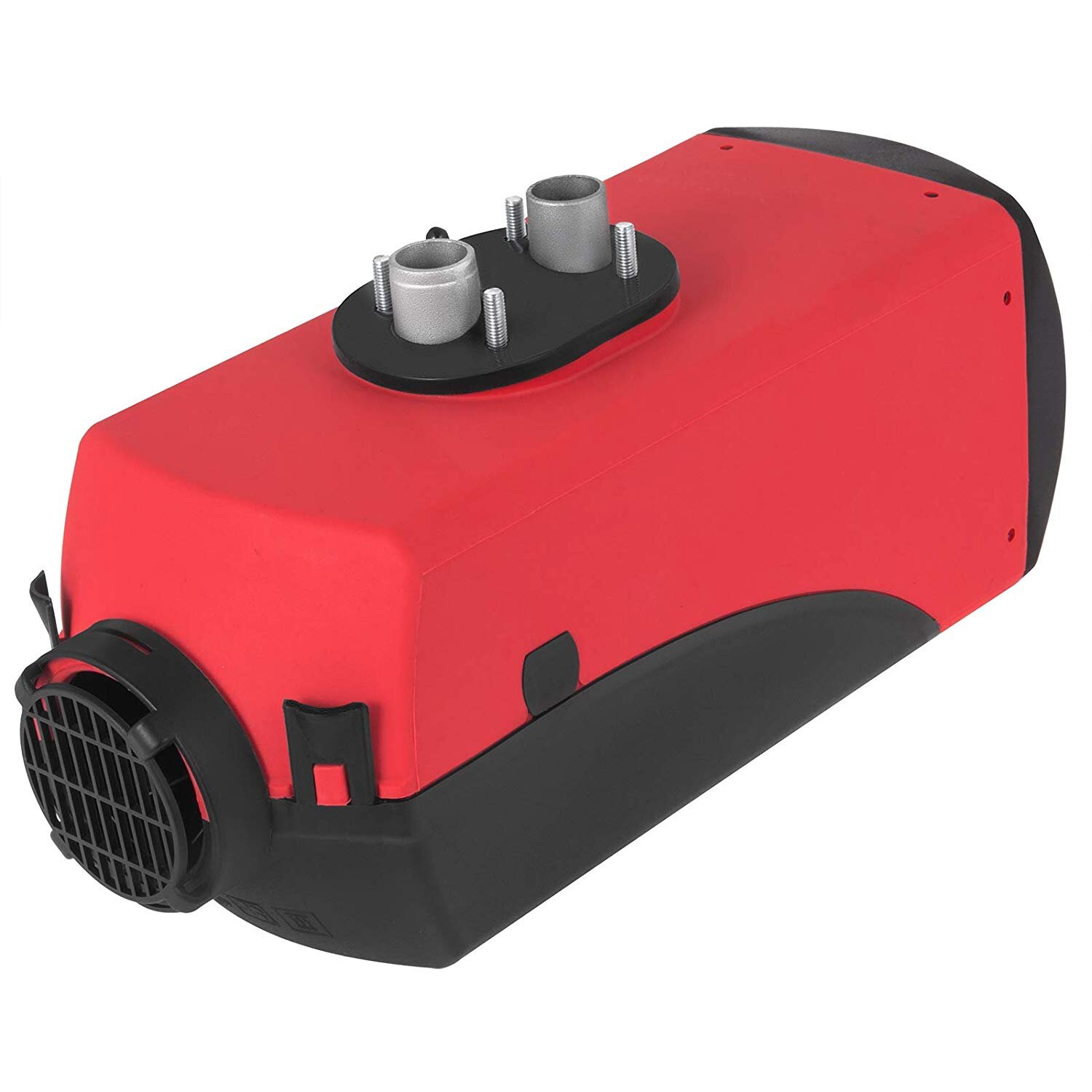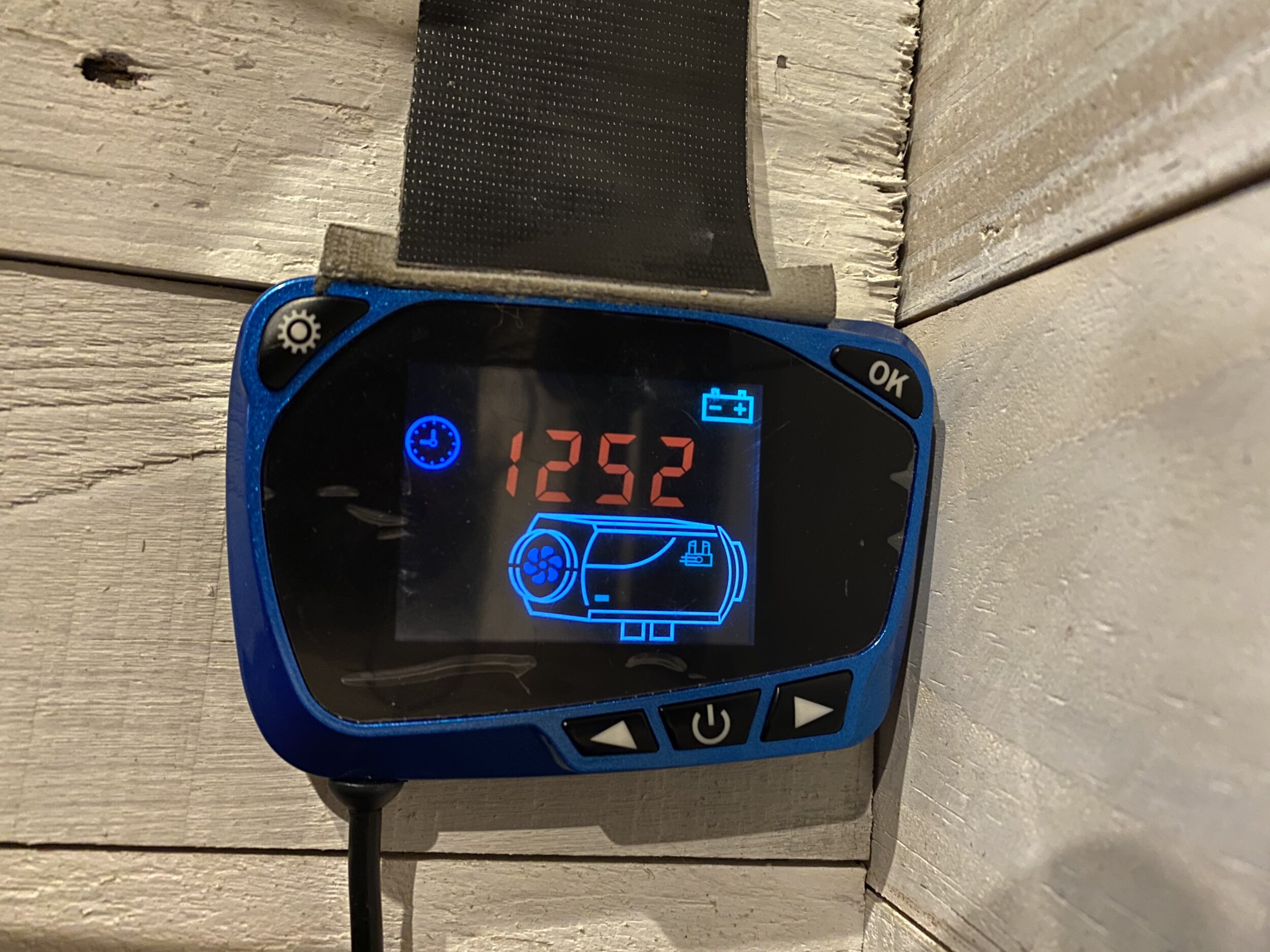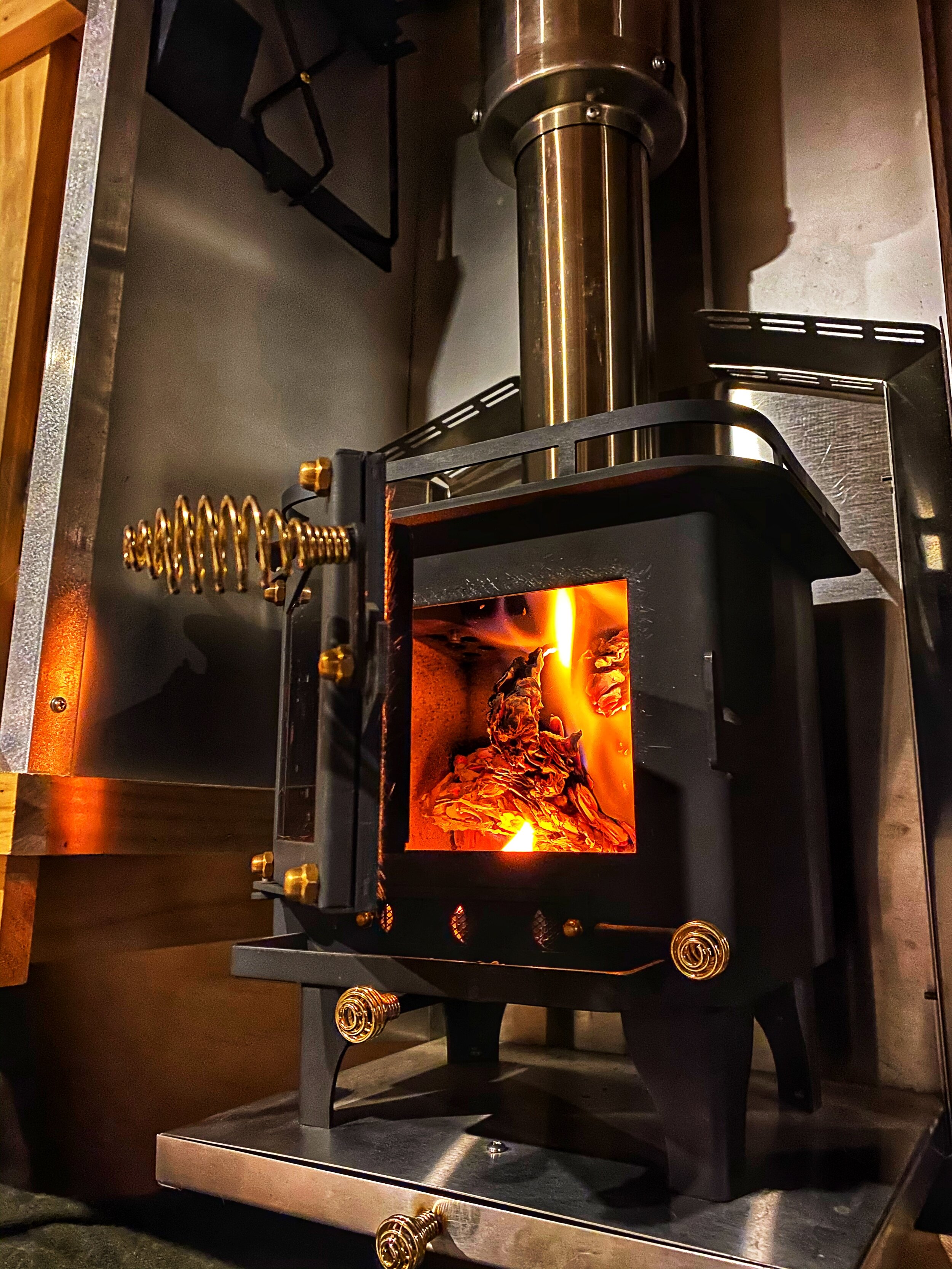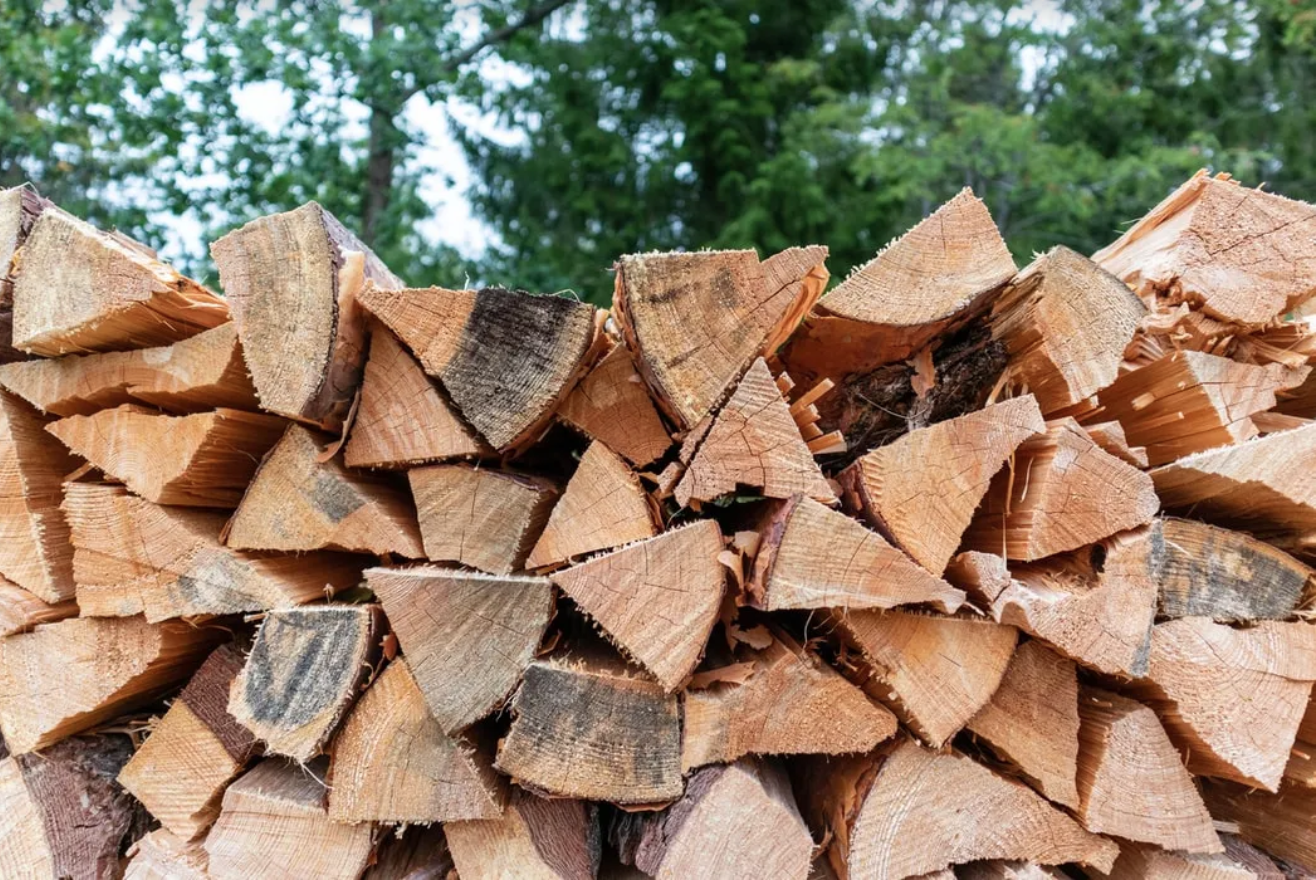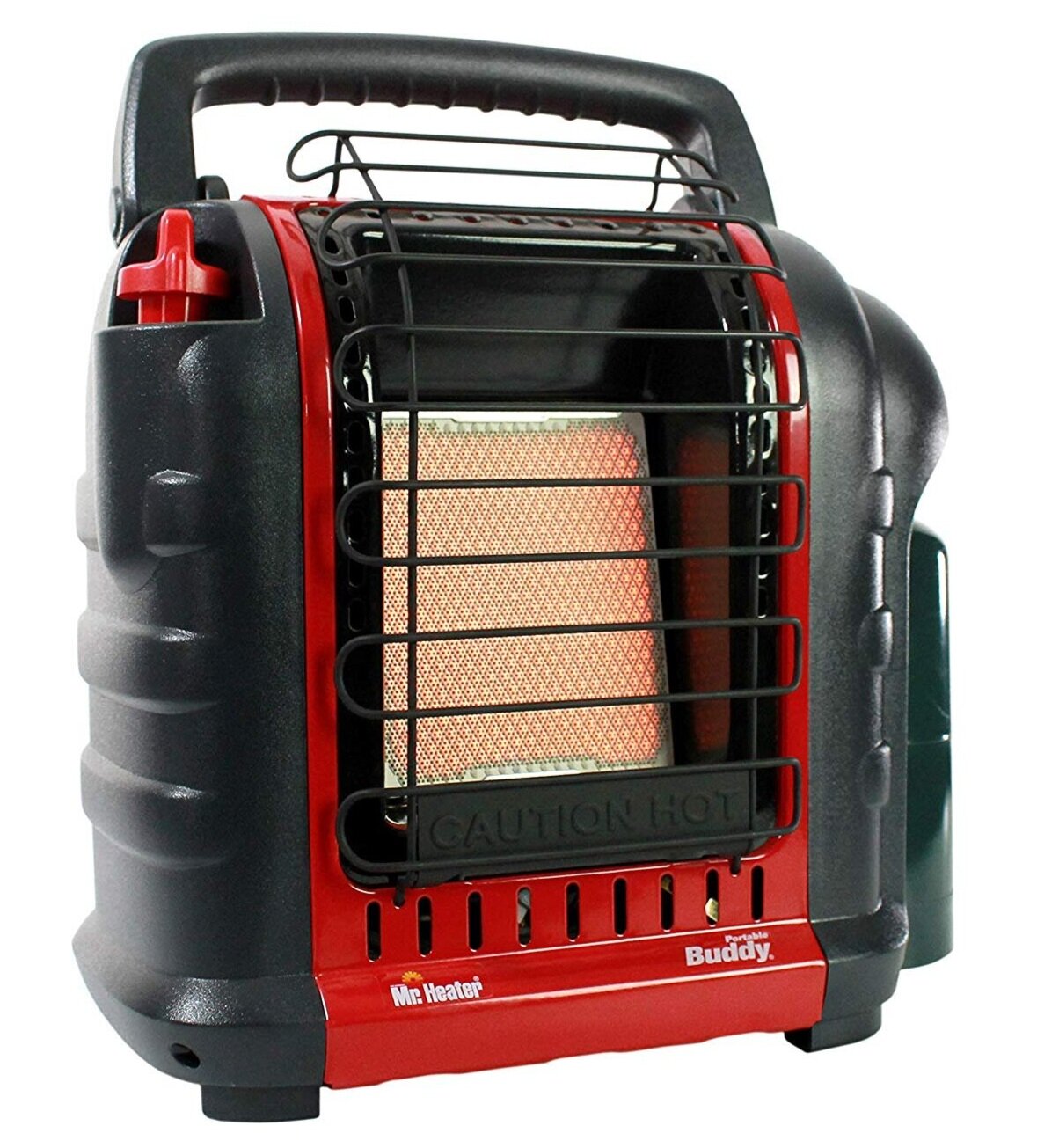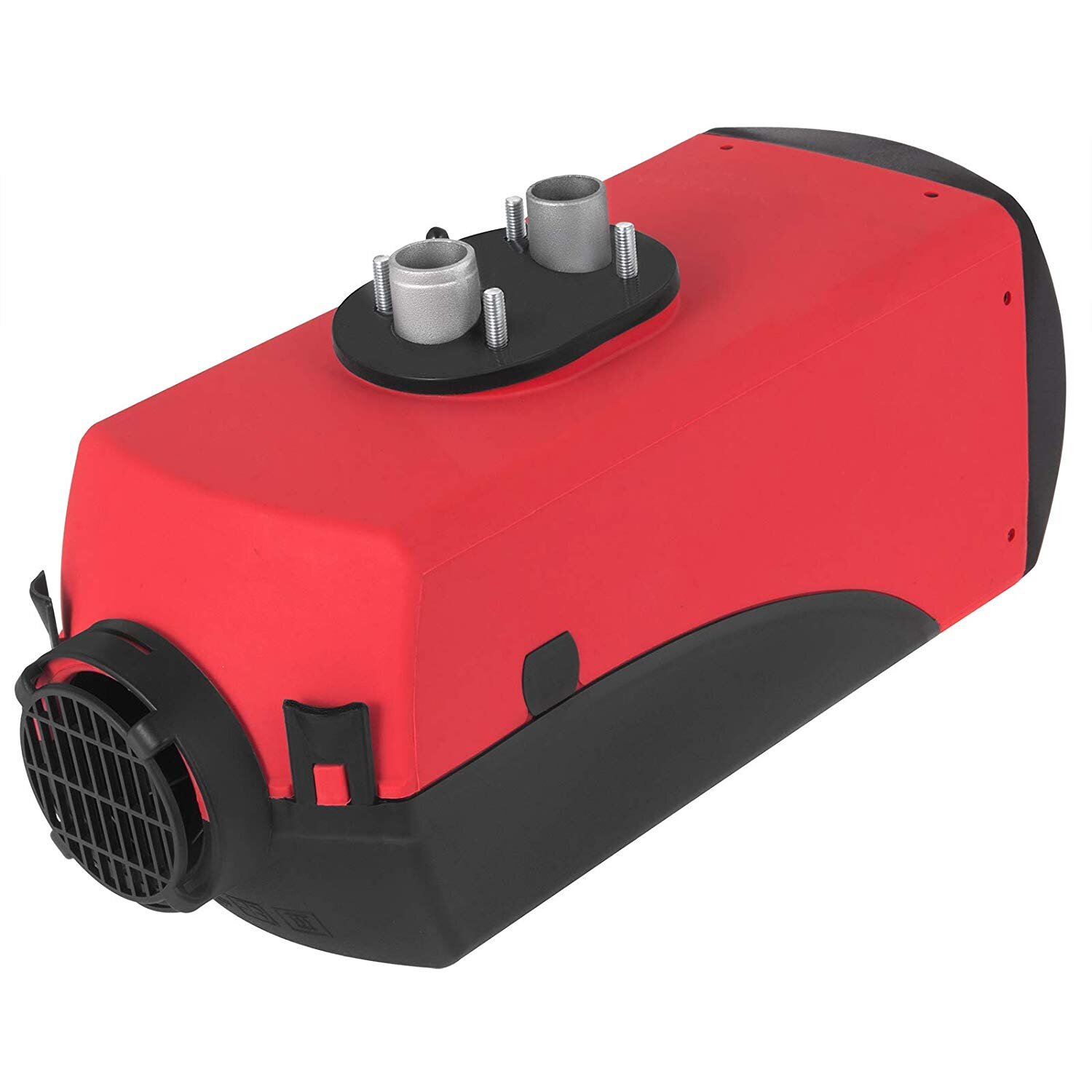Camper Heat Sources: Mr. Buddy Propane, Diesel Heater, or Wood Stove?
Living off-grid in a camper during the winter requires preparation.
The Vanlife Winter series is all about how to keep your rig functional and cozy when it’s frigid outside. In this article, I’ll share my experience making it through sub-zero temps with three different heat sources (propane, diesel, and wood stove). The four main areas of comparisons we’ll focus on are:
Cost: Up-front and Usage
Installation
Convenience (& Safety Notes)
Reliability
If you’re interested in efficient electric options, too, visit us over at RV Solar Connections — we offer professional solar energy consulting, design, planning, and support so you can power your adventure anywhere.
Disclaimer: All links are associated with my Amazon affiliate account. Basically, that means the cost is the same for you (whether you purchase here or by searching for things yourself), but using my link passes on a small cut of the transaction to help support the website and future projects/tutorials. Any support is greatly appreciated.
Skip to TL;DR
Mr. Buddy – up to 9,000 BTUs
When I first started living out of my van (during the early stages of the build), fall was quickly turning to winter in Colorado and I needed a cheap and easy source of heat.
I hadn’t insulated anything yet, and temps in the metal box were dropping below freezing. I did a little research and decided to purchase a Mr. Buddy propane heater.
Cost
The Mr. Buddy was $87.69 up front. Usage cost is going to depend on a few things: How cold is it? How warm do you want to be? How well-insulated is your rig? What are you using as a propane source?
If it’s colder, or 80 degrees is your preferred temp, you’re going to use more propane. If you have killer insulation and are cool at 70 degrees, you’re going to use less propane. You get the idea. For the sake of simplicity, let’s focus on the options for the Mr. Buddy heat source.
1-Pound Camping Gas Cylinder
1-Pound Camping Gas Cylinder
The 1 lb propane camping gas canisters screw easily on to the Mr. Buddy heater. You don’t need much extra room for fuel storage, you don’t have to worry about running any gas lines, and you’ve basically got zero risk for CO leaks. These canisters aren’t cheap though, so you’ll be paying a premium for that convenience.
The best price I’ve found is at Home Depot (4-pack at $14.97, $3.75 per lb) I use about ½ a canister to keep my rig above 60 degrees through most of the night, which comes out to $1.87 per night ($13.09 per week)
20-Pound Propane Tank
20-Pound Propane Tank
After the initial expense of buying a propane tank and gas lines (~$70), it costs about $20 (at big box stores) to exchange the empty 20 lb tank for a full one ($1 per lb). Using ½ lb of propane per night, we arrive at $0.50 per night ($3.50 per week). It’s evident that using a 20 lb tank will save you big money in the long run.
Installation
1 lb camping canisters require virtually no installation besides screwing the canister into the port on the heater.
Installing a 20 lb tank, on the other hand, requires space and hardware to mount the tank, and gas lines/fittings to connect the tank to the heater.
If you’re confident about installing a 20 lb tank yourself, use a gas leak detector to check for any leaks at the various connection points. If you’re uncomfortable doing this yourself, seek out a professional.
(Disclosure: improper installation of a propane heater can result in serious injury or death)
Convenience
Temp range in the van on a night using Mr. Buddy. A decrease in temperature through the night can be expected when following the manufactures guidelines to not use while sleeping. For context, we woke up to 30° F outside.
Starting the Mr. Buddy heater is very simple: press the primer in and out multiple times until you have a flame, hold for 10 seconds, and then set to the desired output (low/high).
Mr. Buddy is not to be used in a moving vehicle – per the User Manual.
Carbon monoxide is a natural by-product of burning propane gas. As such, it’s important to always ensure there is sufficient ventilation when using Mr. Buddy. People die of carbon monoxide poisoning all the time, so don’t play around with this one.
The manual advises that you “NEVER USE THE HEATER WHILE SLEEPING.” I generally follow this recommendation, which can be annoying when I wake up freezing in the middle of the night – you have to turn the heater back on, try to stay awake while it warms up, and then turn it off again before returning back to sleep.
A handful of times I’ve accidentally fallen asleep while Mr. Buddy was in operation. This didn’t set off any alarms and I woke up totally fine. Still, I’m not recommending that anyone try this at home.
Read and follow all the instructions in the user manual, and you should have nothing to worry about as far as safety is concerned.
Safety Note: No matter what heater you decide to use, have a smoke detector, a CO detector, and a small fire extinguisher.
Our three safety assurances: a smoke detector, a carbon monoxide detector, and a fire extinguisher.
Reliability
I’ve been using the Mr. Buddy off and on for over a year now and have had zero issues with getting it started.
If using the 1 lb canisters, make sure you’ve got backups and you’ll be snug as a bug.
Vented vs. Unvented Heat Sources
The Propex HS 2000, a vented space heater.
Propane heaters produce more than just heat and CO. They also produce H2O, another natural by-product of burning propane.
With an unvented heater (unvented = no vent installed for exhaust gases to be directed outside of vehicle) like Mr. Buddy, this wet heat can lead to issues in your rig, like condensation on your ceiling, walls and windows.
If your walls are sweating on a frequent basis, it’s possible for mold to creep in. For this reason, many boondockers & RVers appreciate the dry heat produced by vented heaters.
You’ve got a few options when it comes to vented heaters. If you’d like to use propane, I’ve heard great things about the Propex HS 2000.
I went with a vented diesel heater, and this thing is a serious game changer.
5,000 KW Diesel Heater
up to 17,000 BTU’s
The OG manufacturers of the vented diesel heater hail from Germany - Webasto and Espar. The Germans engineered an incredibly efficient heater, and their patents have allowed them to own this market and charge whatever they please. Expect to pay anywhere from $1,300-$2,000+ for one of these kits.
A third option is the Chinese knock-off. These Chinese models are virtually identical to their German counterparts (so much so that you can replace a gasket on the Chinese Heater with an OE Espar gasket). I purchased a Chinese Diesel Heater kit, which came with every accessory needed for install and operation, for $114.99. Literally less than 10% the price of these German models!
Cost
The Chinese diesel heater was $114.99 up front, with another $120 spent on optional spare parts and accessories.
In terms of ongoing costs for operating, on below-freezing nights I can easily go through a ½ gallon of diesel. The average price for diesel in the United States in 2019 was $3.056/gallon. This comes out to roughly $1.52 per night ($10.64 per week)
High Altitude costs and best practices
Most heaters can only operate efficiently within a particular altitude range. Mr. Buddy advises that their heater may turn off when in areas above 7,000 feet. High end diesel heaters come with the option of a high altitude sensor to automatically adjust the fuel/air ratio to keep the heater running optimally. These kits can increase your range to around 9,000 feet.
Newer models of the Chinese diesel heaters claim to have this altitude feature, though I cannot confirm or deny. I use regular diesel when at or below 7,000 feet, and kerosene above 7,000. Kerosene burns cleaner than diesel, so it’s a better option when the fuel/air ratio might be a little off.
Kerosene is a bit more expensive than diesel and propane. This isn’t an easy fuel to obtain in bulk, and the lowest price I’ve found for one gallon is $8.86. At ½ gallon each night I’m at altitude, this comes out to $4.43 per night ($31.01 per week). Since I don’t habitually camp at altitude, I’ve only had to use kerosene a handful of times in the past six months.
If you’re planning to chase snow and live at higher altitudes through the winter, a Chinese diesel heater may not be the most cost effective option.
Installation
Installing any diesel heater is going to be more involved than the Mr. Buddy.
Installation for both the German heaters and the Chinese models are going to be practically identical, though the placement of the heater and various components (fuel tank, hot air outlet, controller) will depend on your rig and where you’ve got (or can make) space.
I spent approximately 4-6 hours researching the install and learning the basics regarding how the heater functions, another 4 hours setting up/bench testing to ensure the heater worked out of the box, and another 8 hours mounting the heater, fuel tank, fuel pump, fuel filter, fuel lines, intake, exhaust, and running the wires to the heater and to the controller.
You can expect to spend several hours educating yourself, and then approximately 8-12 hours with testing and installation.
(Disclosure: improper install of a diesel heater can result in serious injury or death)
Convenience
Compared to Mr. Buddy and the wood stove, the diesel heater is by far the most convenient and easy to use: press “ON” and set the temperature or fuel pump speed to control the heat output.
I’ve found the thermostat on my particular controller doesn’t work well, so I typically adjust the speed manually (i.e. once I start to feel warm, I lower the pump speed via the controller). There is an after-market controller that is much more sophisticated than any of the standard controllers; for more info, check out The Afterburner by chilly.
Since my heater is a replica of the Espar D2, I referenced this user manual and didn’t find anything advising against operating the heater while driving. I might have missed something though, so take a look at the manual yourself before deciding one way or another.
The exhaust gas (which contains CO) from the combustion chamber of the diesel heater is vented outside of your rig. It’s still a good idea to keep a vent fan cracked, but a properly installed and functionally sound diesel heater will not put you at risk for carbon-monoxide poisoning.
The heater controller.
I often run the diesel heater while sleeping. These heaters have been used for a while now by semi truck drivers to heat their cabs while sleeping. I didn’t see anything in my user manual that advises against using the D2 while asleep, but again, read your user manual before making a decision.
Are Chinese diesel heaters as safe as German counterparts?
I’ve read no reports that indicate Chinese diesel heaters are any more dangerous than German heaters. I’ve yet to find an article or first-hand account about a Chinese heater catching fire or burning down someone's rig. They might be out there, but I couldn’t find them.
Safety Note: No matter what heater you decide to use, have a smoke detector, a CO detector, and a small fire extinguisher.
Reliability
Temp range in the van on a night using the Chinese diesel heater. Temperature will remain constant or increase, depending on thermostat settings. For context, we woke up to 39° F outside.
At the time of this writing, I’ve been running my Chinese diesel heater on a consistent basis for about five months. The only time I’ve had an issue with operation is when I’ve run out of diesel.
You’ll find many mixed reviews online regarding the reliability of these heaters, and although I can only attest to my own experience, I’d like to explain why I (and many other Chinese heater enthusiasts) believe there’s a higher instance of reported “failure” with the Chinese diesel heaters, as compared to the German heaters.
More often than not it comes down to user error. Prior to the more affordable Chinese models, diesel heaters have been a luxury primarily used in commercial RV’s, professional conversions, or otherwise installed by trained professionals.
Since the price of these heaters has traditionally been so high, paying a few hundred extra to get a professional install has been an easy choice for consumers. Installing a diesel heater isn’t rocket science, but there are important guidelines that need to be followed to ensure safe and reliable heater operation.
Compared to the average DIYer, professional upfitters are more likely to be aware of and rigorously follow these guidelines. This is in part due to the poor installation and operation instructions provided with the Chinese diesel heaters. The manuals that come with these heaters are practically worthless, so it’s important to do your research prior to attempting a DIY install.
resources to equip you for install and troubleshootinG
John McK’s Chinese Diesel Air Heater Youtube Series
This is likely the most comprehensive technical breakdown available for these diesel heaters. I would highly recommend watching as many videos in this series as possible prior to install. Knowledge is power!
Chinese Diesel vehicle air heaters: Troubleshooting and Parts sales
This is a Facebook group with many resources and threads that touch on best practices and common mistakes. Explore the “Files” section, use the “search” function, and if you can’t find what you’re looking for, post a new question to the group.
Follow the recommended guidelines for install/operation and this heater will keep you warm through the coldest nights.
CUB Cubic Mini Wood Stove
up to 14,000 BTU’s
Having an unexpected fire in your camper is a nightmare you hope to never see. Enjoying a contained fire is a dream come true.
The heat produced by a wood burning stove will be dry, similar to the other vented heaters we discussed. This heat source shines when it comes to reliability.
Cost
Up-front costs were pretty high, and included:
CUB Cubic Mini Wood Stove - $499
Wall Mount w/ Sliding Tray - $297.12 (optional)
36” Double Wall Flue 3” Pipe - $104.62
24” Insulated 5” Pipe - $75
3” to 5” Adaptor - $22
Ceiling Trim Plate - $22
High Temp Pipe Flashing - $110
Miniature Tool Kit - $75.90 (optional)
Chimney Cap - $19.42
Chimney Pipe Plug - $8.89
Chimney Sweep - $27.50
Shipping from Canada - $161.58
Grand Total - $1,423.03
The up front cost of this heater is significantly higher than Mr. Buddy or the Chinese diesel heater.
Usage cost, on the other hand, can be much lower. Depending on how accessible fire wood is for you, you can potentially pay next to nothing to keep your home on wheels warm through the winter. You can collect branches and sticks (where it’s legal) and use scrap wood from projects (as long as it’s not chemically treated).
Buying hardwood in bulk is very affordable, but if you’re living and traveling full-time in a camper, you likely won’t have the space to store a cord. If it comes down to paying premium rates for a bundle stacked outside the gas station, you’ll still be able to stretch that $5 since the wood stove is compact and efficient. Another option is to purchase pressed logs, such as Enviro-Logs (though they’re made from wax and recycled cardboard and smell a bit funny). Not all pressed logs are meant to be used in wood stoves, so read the box before you buy!
Usage cost will depend on creativity and circumstance, so the range will vary. Expect to pay anywhere from $0 - $1.50 per night (up to $10.50 per week).
Installation
As you can see in the up-front cost list, there are quite a few components needed for installation.
The Cubic Mini flue pipe sizes are not standard diameters. A 3-inch pipe from Home Depot will not fit the “3 inch” outlet on this wood stove, so it’s best to just buy all the hardware from Cubic Mini for a smooth install (otherwise you may find yourself ordering multiple shipments from Canada, and paying for shipping each time).
Find a place to mount the stove, drill a fairly giant hole in your roof, place the pipe through the hole and seal everything up. This is oversimplified, but you get the idea.
Expect to spend a couple of hours researching and approximately 6-9 hours on install.
(Disclosure: improper install of a wood burning stove can result in serious injury or death)
Convenience
Getting a fire started in the wood stove is a little more labor intensive than the propane or diesel heaters. First, you’ve got to climb on top of your roof and replace the cap (used to keep bugs, rain, etc. out of the pipe) with the chimney. Once the smoke has an escape route, get the kindling fired up and begin adding larger pieces of wood.
After a few minutes you’ll have a roaring fire and be able to kick back and relax... until you need to add more fuel. Hardwood or pressed logs will burn the hottest and last the longest. Before taking off to the next destination, replace the chimney with the cap.
The cap.
The chimney.
Temp range in the van on a night using the wood stove. A decrease in temperature through the night can be expected, since you don’t add wood while sleeping. For context, we woke up to 27° F outside.
On maintenance
Each time you light a new fire, you’ll want to scoop out any ash in the stove from the previous fire.
Sweep the chimney periodically to keep your pipes clean and free of creosote build up. Dirty pipes can lead to poor stove operation and dangerous chimney fires. The frequency at which these cleanings will need to take place will mostly depend on how often you use the stove and the type of wood used. This can range anywhere from bi-weekly to once per year.
The warning sheet for this wood stove does not advise against using while driving, however, it does advise to “never leave your stove unattended when in use”. I would caution against using the stove while driving, especially if you intend on adding fuel to the fire while cruising down the road. It only takes one big bump to send flames flying out the door of your stove and into your cabin. F that!
ON Safety
I asked Cubic Mini if it was safe to sleep with a fire burning through the night. Here’s our exchange:
I’ve fallen asleep with a fire roaring in my stove on multiple occasions. For legal purposes, I’ll recommend that you use your own discretion and consider everything written here to be for entertainment purposes only.
No matter how big the fire is when you fall asleep, it’s almost certainly going to be out before you wake up. Your cabin can stay warm for the majority of the night, but if you want to get out of bed without freezing your ass off, you’ll need to light another fire and give it time to warm up. Having an easy start propane or diesel heater can make your morning routine a little more comfortable/less effortful.
Since the exhaust gas for a wood burning stove is vented to the outside through the flue pipe, a properly installed stove will not put you at risk for CO poisoning.
A janky (or improperly installed) stove, on the other hand, is a different story. It’s normal to experience a faint smoke smell, but if there’s a heavy smoke smell in the air while the stove door is closed, you might have a leak. Check for leaks where the chimney and flue pipe meet, and each flue pipe connection point. When the stove door is closed, there should be no sign of smoke in your rig.
Since the intake of the stove is inside your home, the fire will be consuming oxygen from your living space. Keep a vent fan or window cracked to avoid risk of oxygen depletion. Oxygen depletion can cause irritability, lethargy, headaches, fatigue, and can lead to Hypoxemia or Hypoxia.
Safety Note: No matter what heater you decide to use, have a smoke detector, a CO detector, and a small fire extinguisher.
Reliability
Here’s what Cubic Mini has to say about the longevity of their wood stoves.
These stoves have only been commercially available since 2013, but the internet is full of nothing but positive reviews and praise for both the CUB and it’s big brother, the GRIZZLY. I can personally attest to the craftsmanship and sturdiness of this product; there’s nothing flimsy about it.
Compared to the diesel and propane heaters, there is very little that can go wrong with a wood stove. No electrical components, no gas lines or fuel pumps. If you can crack a window, start a fire and feed it wood, you WILL stay warm.
TL;DR
Let’s look at the ratings for each of these heaters side by side to help visualize all the comparisons we’ve just gone over.
Two is One, One is None
In the USMC, we have a sacred maxim: “two is one, one is none.”
Anything that can go wrong, will go wrong… but there’s something you can do to maximize your resilience. Always have a back-up plan for when something goes wrong, it’s bound to happen eventually. You run out of propane, or your fuel pump unexpectedly dies – having a back-up heat source can mean the difference between life and death (or maybe just mild discomfort, but you never know).
The only reason I can accurately compare these three heat sources is because I own all of them and use them interchangeably. The best way to ensure you stay warm through those freezing nights is to be prepared.


